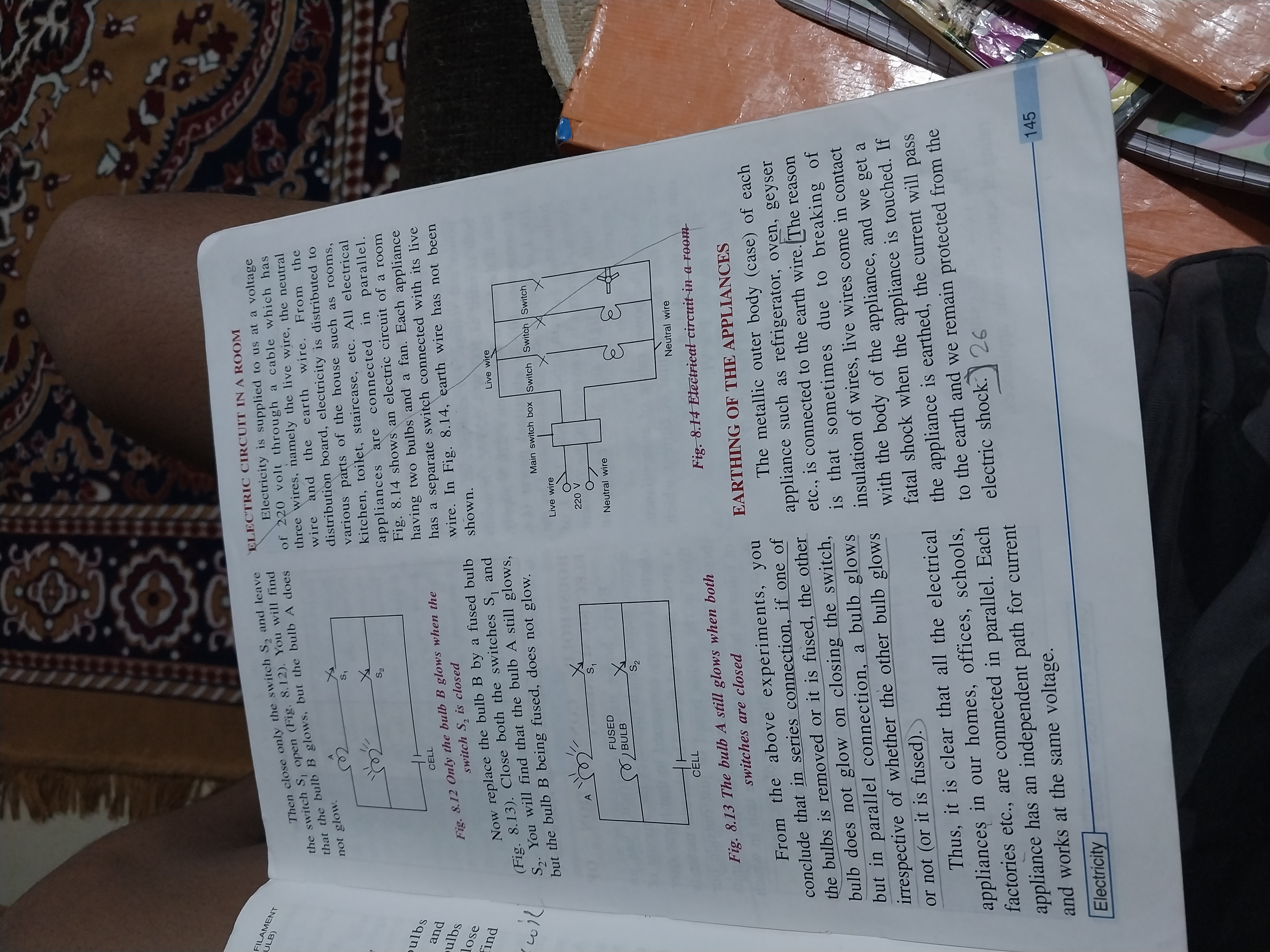What are the differences between series and parallel connections in electrical circuits, and why is earthing important for appliances?

Understand the Problem
The question is examining the relationship between electrical connections, specifically how bulbs function in series and parallel circuits, and the importance of earthing electrical appliances for safety.
Answer
Series: one path; failure stops all. Parallel: multiple paths; others continue if one fails. Earthing prevents shock.
Series circuits allow current to flow in one path; a break stops the entire flow. Parallel circuits let current pass through multiple paths; if one path fails, others continue. Earthing prevents electric shock by directing fault currents safely to the ground.
Answer for screen readers
Series circuits allow current to flow in one path; a break stops the entire flow. Parallel circuits let current pass through multiple paths; if one path fails, others continue. Earthing prevents electric shock by directing fault currents safely to the ground.
More Information
Series and parallel configurations impact whether circuit elements function independently. Earthing is crucial for safety, directing excess electricity from appliance faults safely into the ground.
Tips
Ensure understanding of current paths and effects of circuit breaks. Recognize the importance of earthing in protecting against shocks.
Sources
- Series and Parallel Circuits - The Basics - thespruce.com
- Difference Between Series And Parallel Circuits - BYJU'S - byjus.com
AI-generated content may contain errors. Please verify critical information